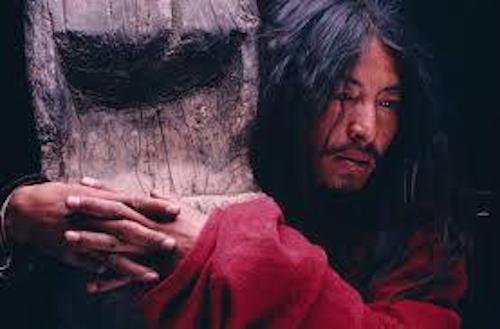The World of Movies: Himalaya: A Leader’s Childhood
Written by Rachael Crawley
The World of Movies is a series that explores global cinema, drawing on films from many countries, industries and eras. This week, we chart a path through the mountains of Nepal.
Himalaya: A Leader’s Childhood.
May contain spoilers.
Himalaya: A Leader’s Childhood (Eric Valli, 1999) is a film of spectacular beauty. Focused on the salt trade in the villages of Nepal’s Dolpa region, it tells a story of power dynamics and the influence of tradition in this remote place. Brilliantly shot and presented with great detail, it is a rich viewing experience.
First of all – yes, there are incredible vistas of the Himalayas throughout. Director Eric Valli, who has worked in Nepal multiple times and specializes in mountain photography, takes advantage of every frame in this film. The cinematography absolutely lives up to its beautiful setting, and more intimate indoor moments look great as well. The images are clean and crisp, and give off the impression of a movie made much later than 1999. I particularly enjoyed its motif of birds, placed against the stark landscape. For its visual aspects alone, it is worth seeing. At the same time, Himalaya has a compelling story that is as interesting as its imagery.
Just as the caravan is to leave for their trading season, the chieftain’s heir dies unexpectedly. A power struggle follows between the elderly Tinle and the younger Karma. Soon enough, the village is divided and their entire livelihood is at stake. The difficult journey begins, but is quickly met with serious trouble. While still navigating deep-seated conflicts, the rival groups must begin to make impossible decisions.
Weaved into this narrative are the area’s traditional stories and customs, both in day-to-day moments and in times of larger significance. Sometimes, these are key to the narrative – sometimes, they are blink-and-you-miss it shots, or small asides. All these elements add up to a very detailed look at life in this village. The amount of time Valli spends showing it, without heavy emphasis or commentary, adds a larger context to the overarching themes presented in the script.
With the exception of Thinle Londhup as Tinle and Lhakpa Tsamchoe as Pema, Thinle’s daughter-in-law, all of the cast are local residents. Considering that most have never acted before, their performances are uniformly strong and create an interesting and well-defined group of characters. I would especially like to note Karma Wangiel, playing Tinle’s young grandson and the future heir. Though his character seems quiet, and mostly takes in information from those around him, Wangel’s excellent performance makes him anything but a passive character.
Himalaya is well-paced and holds attention throughout, and is even gripping in some scenes. Moments of danger or fear are met with refreshing times of quiet and calm, particularly during the beginning of the journey, where viewers can sit back and take in the beauty onscreen. For viewers who seek an adventure, are interested in the Himalayan region, or simply want a visual treat, this movie is an excellent choice.
Rachael Crawley holds a Master's Degree in Film and Photography Preservation and Collections Management from Ryerson University, and has worked with film in Canada and in Europe. She adores language and cinema, and how these subjects interact with each other.




